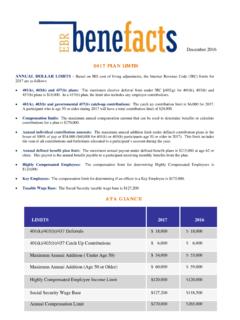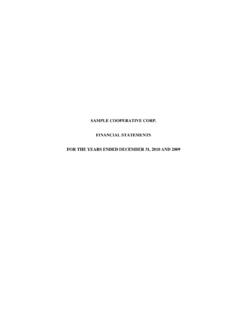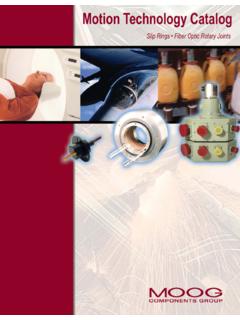Transcription of APPLICATION OF MICROBIAL -AMYLASE IN INDUSTRY – A …
1 850 Brazilian Journal of Microbiology (2010) 41: 850-861 ISSN 1517-8382 APPLICATION OF MICROBIAL - amylase IN INDUSTRY A REVIEW Paula Monteiro de Souza; P rola de Oliveira e Magalh es Departamento de Ci ncias Farmac uticas, Faculdade de Ci ncias da Sa de, Universidade de Bras lia, Bras lia, DF, Brasil. Submitted: March 23, 2010; Returned to authors for corrections: March 30, 2010; Approved: May 24, 2010. ABSTRACT Amylases are one of the main enzymes used in INDUSTRY . Such enzymes hydrolyze the starch molecules into polymers composed of glucose units. Amylases have potential APPLICATION in a wide number of industrial processes such as food, fermentation and pharmaceutical industries. -Amylases can be obtained from plants, animals and microorganisms. However, enzymes from fungal and bacterial sources have dominated applications in industrial sectors.
2 The production of - amylase is essential for conversion of starches into oligosaccharides. Starch is an important constituent of the human diet and is a major storage product of many economically important crops such as wheat, rice, maize, tapioca, and potato. Starch-converting enzymes are used in the production of maltodextrin, modified starches, or glucose and fructose syrups. A large number of MICROBIAL -amylases has applications in different industrial sectors such as food, textile, paper and detergent industries. The production of -amylases has generally been carried out using submerged fermentation, but solid state fermentation systems appear as a promising technology. The properties of each - amylase such as thermostability, pH profile, pH stability, and Ca-independency are important in the development of fermentation process. This review focuses on the production of bacterial and fungal -amylases, their distribution, structural-functional aspects, physical and chemical parameters, and the use of these enzymes in industrial applications .
3 Key words: -Amylases; enzyme production; bacterial and fungal amylase ; starch INTRODUCTION -Amylases ( ) are enzymes that catalyses the hydrolysis of internal -1,4-glycosidic linkages in starch in low molecular weight products, such glucose, maltose and maltotriose units (29, 42, 66). Amylases are among the most important enzymes and are of great significance for biotechnology, constituting a class of industrial enzymes having approximately 25% of the world enzyme market (66, 68). They can be obtained from several sources, such as plants, animals and microorganisms. Today a large number of MICROBIAL amylases are available commercially and they have almost completely replaced chemical hydrolysis of starch in starch processing INDUSTRY . The amylases of microorganisms have a broad spectrum of industrial applications as they are more stable than when prepared with plant and animal -amylases (81).
4 The major advantage of using microorganisms for the production of amylases is the economical bulk production capacity and the fact that microbes are easy to manipulate to obtain enzymes of desired characteristics. *Corresponding Author. Mailing address: Departamento de Ci ncias Farmac uticas, Faculdade de Ci ncias da Sa de, Universidade de Bras lia, Campus Darcy Ribeiro, Asa Norte, Bras lia, DF, Brasil.; E-mail: 851 Souza, et al. APPLICATION of MICROBIAL - amylase in INDUSTRY - amylase has been derived from several fungi, yeasts and bacteria. However, enzymes from fungal and bacterial sources have dominated applications in industrial sectors (29). -Amylases have potential APPLICATION in a wide number of industrial processes such as food, fermentation, textile, paper, detergent, and pharmaceutical industries.
5 Fungal and bacterial amylases could be potentially useful in the pharmaceutical and fine-chemical industries. However, with the advances in biotechnology, the amylase APPLICATION has expanded in many fields such as clinical, medicinal and analytical chemistry, as well as their widespread APPLICATION in starch saccharification and in the textile, food, brewing and distilling industries (29, 42, 61). -Amylases are one of the most popular and important form of industrial amylases and the present review point out the microorganisms that produce this enzymes. STRUCTURAL AND FUNCTIONAL CHARACTERISTICS OF - amylase The - amylase ( -1,4-glucan-4-glucanohydrolase) can be found in microorganisms, plants and higher organisms (42). The - amylase belongs to a family of endo-amylases that catalyses the initial hydrolysis of starch into shorter oligosaccharides through the cleavage of -D-(1-4) glycosidic bonds (9, 36, 42, 80).
6 Neither terminal glucose residues nor -1,6-linkages can be cleaved by - amylase (88). The end products of - amylase action are oligosaccharides with varying length with an -configuration and -limit dextrins (86), which constitute a mixture of maltose, maltotriose, and branched oligosaccharides of 6 8 glucose units that contain both -1,4 and -1,6 linkages (88). Others amylolytic enzymes participate in the process of starch breakdown, but the contribution of - amylase is the mos important for the initiation of this process (80). The amylase has a three-dimensional structure capable of binding to substrate and, by the action of highly specific catalytic groups, promote the breakage of the glycoside links (36). The human - amylase is a classical calcium-containing enzyme composed of 512 amino acids in a single oligosaccharide chain with a molecular weight of kDa (88).
7 The protein contains 3 domains: A, B, and C (Figure 1). The A domain is the largest, presenting a typical barrel shaped ( / )8 super structure. The B domain is inserted between the A and C domains and is attached to the A domain by disulphide bond. The C domain has a sheet structure linked to the A domain by a simple polypeptide chain and seems to be an independent domain with unknown function. The active site (substrate-binding) of the - amylase is situated in a long cleft located between the carboxyl end of the A and B domains. The calcium (Ca2+) is situated between the A and B domains and may act in the stabilization of the three-dimensinoal structure and as allosteric activator. Binding of substrate analogs suggest that Asp206, Glu230 and Asp297 participate in catalysis (56). The substrate-binding site contains 5 subsites with the catalytic site positioned at subsite 3.
8 Substrate can bind to the first glucose residue in subsite 1 or 2, allowing cleavage to occur between the first and second or second and third glucose residues (88). Figure 1. Structure - amylase . Domain A is shown in red, domain B in yellow and domain C in purple. In the catalytic center, the calcium ion is shown in the blue sphere and the chloride ion in the yellow sphere. The green structures are bound to the active site and to the surface binding sites (62). 852 Souza, et al. APPLICATION of MICROBIAL - amylase in INDUSTRY STARCH Starch is an important constituent of the human diet and, for this purpose, is used chemically and enzymatically processed into a variety of different products such as starch hydrolysates, glucose syrups, fructose, maltodextrin derivatives or cyclodextrins, used in food INDUSTRY .
9 In addition to that, the sugars produced can be fermented to produce ethanol. In spite of the large number of plants able to produce starch, only a few plants are important for industrial starch processing. The major industrial sources are maize, tapioca, potato, and wheat, but limitations such as low shear resistance, thermal resistance, thermal decomposition and high tendency towards retrogradation limit its use in some industrial food applications (1, 28, 86). Among carbohydrate polymers, starch is currently enjoying increased attention due to its usefulness in different food products. Starch contributes greatly to the textural properties of many foods and is widely used in food and industrial applications as a thickener, colloidal stabilizer, gelling agent, bulking agent and water retention agent (37). Starch is a polymer of glucose linked to another one through the glycosidic bond.
10 Two types of glucose polymers are present in starch: amylose and amylopectin (Figura 2a and 2b). Amylose and amylopectin have different structures and properties. Amylose is a linear polymer consisting of up to 6000 glucose units with -1,4 glycosidic bonds. Amylopectin consists of short -1,4 linked to linear chains of 10 60 glucose units and -1,6 linked to side chains with 15 45 glucose units. Granule bound starch synthase can elongate malto-oligosaccharides to form amylose and is considered to be responsible for the synthesis of this polymer. Soluble starch synthase is considered to be responsible for the synthesis of unit chains of amylopectin. - amylase is able to cleave -1,4 glycosidic bonds present in the inner part of the amylose or amylopectin chain (56, 78, 84, 86). Figure 2. Two types of glucose polymers are present in starch: amylose (A) is a linear polymer consisting of up to 6000 glucose units with -1,4 glycosidic bonds (56) and amylopectin (B) consists of short -1,4 linked to linear chains of 10 60 glucose units and -1,6 linked to side chains with 15 45 glucose units (56).

















